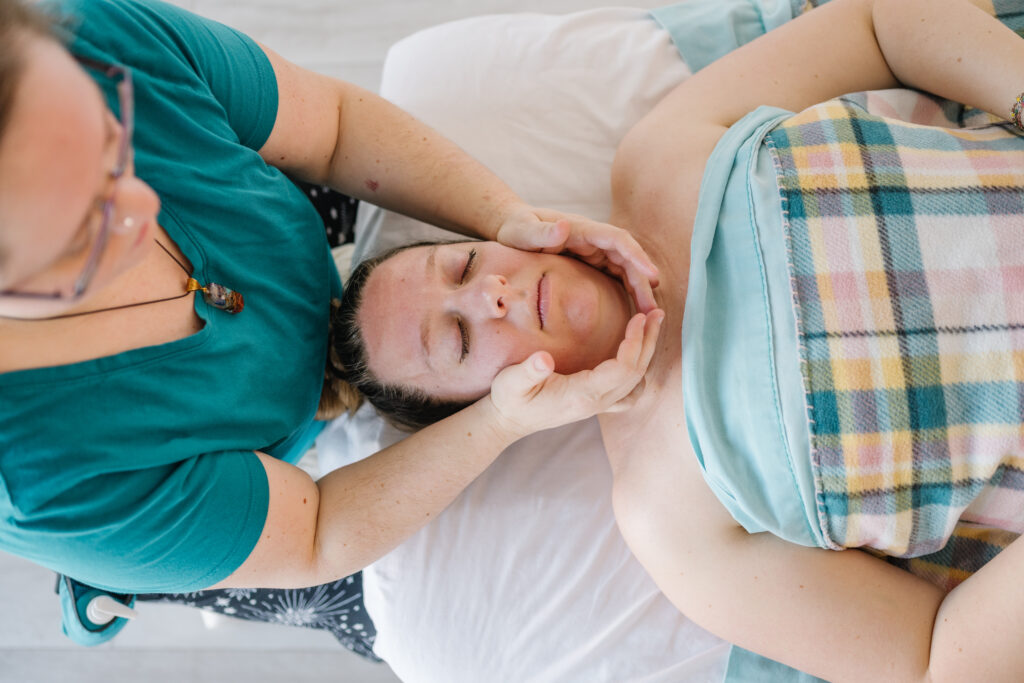In the realm of holistic therapies, craniosacral massage stands out as a uniquely gentle and profoundly effective treatment. By focusing on the craniosacral system—the membranes and fluid surrounding the brain and spinal cord—this technique offers a range of benefits that can enhance both physical and emotional well-being. Let’s dive into what craniosacral massage is, its benefits, and what to expect during a session.
What is Craniosacral Massage?
Craniosacral massage is a hands-on therapeutic approach that involves light touch to evaluate and enhance the functioning of the craniosacral system. Developed by Dr. John Upledger in the 1970s, this modality aims to release restrictions in the craniosacral system, promoting self-healing and balancing the body’s rhythms. The therapist uses gentle techniques to manipulate the bones of the skull, spine, and sacrum, creating an environment for relaxation and healing.
Benefits of Craniosacral Massage
- Deep Relaxation: One of the most immediate benefits of craniosacral massage is its ability to induce a profound state of relaxation. This calming effect can help reduce stress and anxiety, making it a perfect escape from the chaos of daily life.
- Pain Relief: Many clients report significant relief from chronic pain conditions, including migraines, neck and back pain, and fibromyalgia. The gentle nature of the therapy helps to alleviate tension and restore balance in the body.
- Improved Nervous System Function: By releasing restrictions in the craniosacral system, this massage can enhance the functioning of the central nervous system, leading to improved coordination and reduced symptoms of anxiety and depression.
- Support for Emotional Release: Craniosacral therapy can facilitate emotional healing by addressing stored trauma and stress in the body. Many individuals find it helps them process emotions in a safe and supportive environment.
- Enhanced Overall Wellness: Regular sessions can promote better overall health, supporting the body’s natural healing processes and improving immune function.
- Gentle Approach: Unlike other forms of massage that may involve deeper pressure, craniosacral therapy is non-invasive and suitable for people of all ages, including infants and the elderly.
Who is Craniosacral Massage For?
Craniosacral massage is perfect for anyone seeking a gentle, deeply calming approach to bodywork. It’s ideal for individuals who are sensitive to pressure, recovering from injury, or dealing with chronic pain and tension.
This therapy is also well-suited for those experiencing headaches, migraines, stress, or nervous system imbalances. By working with the body’s natural rhythms rather than applying deep pressure, craniosacral massage offers a safe, restorative option for people of all ages, including children and older adults.
Whether you’re looking for relief from specific symptoms or simply want a quiet, nurturing space to relax and reset, craniosacral therapy provides a soothing path to overall wellness.
How is Craniosacral Massage Different From Other Types of Massage?
Unlike traditional massage techniques that focus on kneading and manipulating muscles, craniosacral massage takes a much lighter, more subtle approach. Using gentle touch, the therapist works with the body’s natural rhythms to release tension in the central nervous system. This makes craniosacral therapy ideal for those who prefer minimal pressure or who are dealing with chronic pain, stress, or trauma.
Lymphatic drainage massage also uses light, rhythmic strokes, but its goal is quite different—it focuses on stimulating the lymphatic system to reduce swelling, support immunity, and flush out toxins. While both treatments are soothing and restorative, craniosacral therapy prioritizes calming the nervous system, whereas lymphatic drainage emphasizes detoxification and fluid movement.
Together, these therapies represent a softer, more mindful side of bodywork. They are particularly suited for those who may not respond well to deep tissue techniques but still want powerful results, whether that’s nervous system regulation, reduced inflammation, or overall well-being. Other types of massage we offer may be appropriate too for your situation.

What to Expect During a Session
A typical craniosacral massage session lasts about 60 to 90 minutes. Here’s a glimpse into what you can expect:
- Consultation: Your therapist will begin by discussing your health history, current concerns, and goals for the session. This dialogue helps tailor the treatment to your individual needs.
- Comfortable Setting: You will lie face up and fully clothed on a comfortable massage table. The environment is often quiet and peaceful, encouraging relaxation.
- Gentle Touch: The therapist will use a light touch, often applying pressure no greater than that of a nickel, to various areas of your head, neck, and back. They may also work on your sacrum, which is crucial for the craniosacral system.
- Listening to Your Body: Throughout the session, the therapist remains attuned to your body’s subtle rhythms and responses, making adjustments as needed to support your healing process.
- Integration Time: After the session, you’ll have time to rest and absorb the experience. Your therapist may provide insights or recommendations for continued self-care.
Conclusion
Craniosacral massage offers a gentle yet powerful approach to healing that can profoundly impact your physical, emotional, and mental well-being. Whether you’re seeking relief from chronic pain, a means to manage stress, or simply a deeper connection to your body, this therapy provides a nurturing space for healing and transformation. Consider exploring craniosacral massage to unlock its myriad benefits—your body and mind will thank you!



